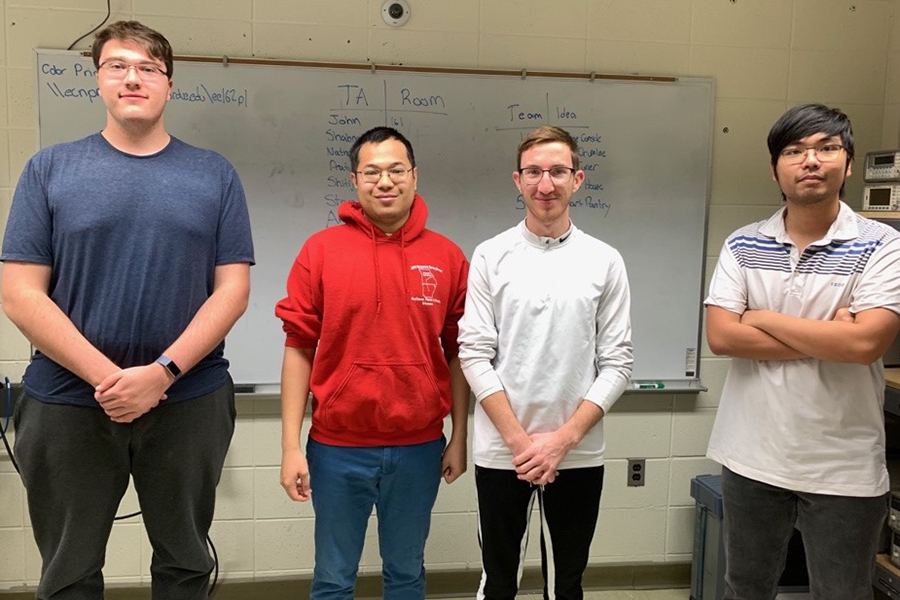Senior Design Spotlight: Team Four Guys and a Guitar

The Purdue University campus has been shut down since mid-March because of COVID-19, but that didn’t stop ECE students from completing their senior design projects. Team Four Guys and a Guitar made an automatic guitar tuner that can tune all the notes on a standard 6-string guitar to a specific tuning configuration.
Team members Zubin Kane, James Lawless, Quang Nguyen, and Jeromy Yu say the purpose of the tuner is to make guitar tuning faster for guitarists who need multiple open note tunings for a performance quick tuning for performance and convenient tuning for casual players. This was accomplished by using a capacitive LCD touchscreen, a MEMS microphone, and two motors to simultaneously play and tune the guitar. All these devices were controlled by an STM32F4 microcontroller, and the entire system was powered from wall power.
Lawless says the senior design process gave him valuable experience in how to approach the unknown.
“At the start of this project I had no idea how to design a PCB, drive a touchscreen, or fine tune a stepper motor,” he says. ”Almost all of what we did for this project required us to learn new skills and try new tools. It was a bit daunting at first, but focusing on incremental progress and learning from our mistakes allowed us to reach our goals in the end. I find now that approaching problems you have no background in and developing your own solution from scratch is both educational and satisfying.”
Team members say unifying multiple subsystems (microphone audio capture, motor control, user touchscreen input, and power regulation) onto one microcontroller seamlessly was the biggest challenge of the project. They say while each part of the project could be demonstrated well by themselves, it took a lot of debugging and process revisions to make sure the microcontroller could handle multiple processes at once and the user experience was not riddled with lag or unnecessary steps.
Kane says many of the skills he used or learned working on this project built on skills he had acquired through previous coursework.
“The core foundation of my subsystem relied on measuring power draws and pulse-width modulation waves, which built upon my electronic measurements and signals courses,” he says. “The actual implementation of the motor control used embedded C, building upon my “Advanced C” and microcontrollers coursework. Communicating with businesses to ensure that my team could acquire the parts it needed used skills developed from my business communications course, my business etiquette course, and my entrepreneurship course. Throughout the project, ensuring a positive and welcoming atmosphere of teamwork where all ideas were welcome while maintaining an organized approach used skills that I have developed from most of my engineering classes to date.”
Yu says when he encountered a new concept or problem, he would surf the web or ask his team members to get the answers he needed.
“Knowledge I learned from this project is how the Fast Fourier Transform worked,” he says. “A learning strategy I employed was first to read an online resource about the theory behind the FFT. Then, I read pseudocode to see how the FFT works practically. While reading through the code, I tried to align with what part of the theory corresponds to what lines of code. I then implemented the FFT in C for the STM32F407, so that I could convert a buffer of digital time domain values into a frequency spectrum. Since I do not have much musical knowledge, I often asked my lab partners to learn more
